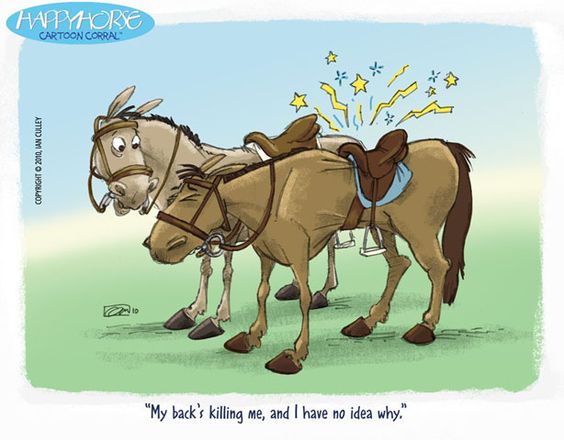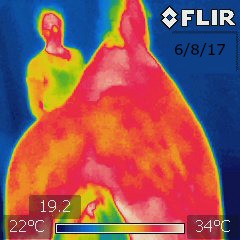
This is a case that I’ve recently been working on. The main character (& he is a bit of a character) is Explorer. He is a very handsome German Sport Pony. I don’t have any photos of him, you’ll just have to take my word for it! Explorer is a dressage horse and is currently riding 4th level. Recently, he & his owner had a slight detour in their training and showing. Here’s their story (hint, it has a happy ending!!!).
I have had the honor and pleasure of seeing Explorer on an as needed basis for acupuncture and chiropractic care to enhance his performance for many years. So, I wasn’t surprised to see his name on the appointment calendar. He was training up a level and was likely having the aches and pains that go with this advanced level. I showed up at the appointment and his owner began to tell me how bad things had gotten for Explorer. He wasn’t able to turn to the left at all and going to the right was only marginally better. He seemed hard to warm up, had no rhythm in his gaits and no power from behind. His owner said the farrier had noticed how painful he seemed all over when he had been there to shoe and had left a liniment that he liked to use.
Right away, I noticed, he wasn’t his usual self. His owner commented that he seemed depressed. When I looked at his back, there was significant muscle atrophy in his caudal trapezius and the longissimus muscle along his back. We took him into the arena to lunge him. He was very short strided in the rear at both the trot and the canter. It was very hard for him to pick the canter up and he seemed resentful the entire time. His owner commented that she had never seen him this crabby for this length of time.

 I had brought a thermography camera with and we decided to image his back with it. I’m sure glad we did! Thermography cameras can measure the surface temperature of bodies. This image can tell us so much about what is actually happening with the soft tissue. It can show heat and coolness. This can help with our diagnosis of the cause of the pain and dysfunction.
I had brought a thermography camera with and we decided to image his back with it. I’m sure glad we did! Thermography cameras can measure the surface temperature of bodies. This image can tell us so much about what is actually happening with the soft tissue. It can show heat and coolness. This can help with our diagnosis of the cause of the pain and dysfunction.
Explorer’s back had a well defined white stripe down the center of his back. This is an example of too much heat in an area. Horses do have a dorsal heat strip, you just shouldn’t be able to fry an egg on it! The heat map also goes down over the pelvis and over the Sacro-iliac (SI) region. Explorer was suffering from pretty intense back pain. This was very different than what I usually treated him for. His poll and the base of his neck and his lumbar area are often tight. A couple of years ago, he had a front limb “lameness” that resolved with adjustments, acupuncture, and some exercises.
The owner had just gotten a very fancy, new saddle. The fitter had been to her barn to fit the saddle and he said that it fit very well. When I looked at the saddle it seemed to bridge throughout much of the back. The tree wasn’t distributing the weight very well and the horse’s back was reacting to this.
That day, I adjusted him, did electro-acupuncture in his neck area and needled some points around his SI & pelvis. He had many restrictions that needed to be adjusted. The poll and base of his neck were very “stuck”, as was the lumbar area. The acupuncture took the treatment further by relieving the pain and stiffness in his neck. I showed the owner some good restorative exercises to help his back and neck. We set up an appointment for the next week.
The next week he was much improved. The owner said she was able to ride him during the week. He was able to do his lateral work much better.
Explorer’s follow up appointments have gone very well. You can see how different this thermographic image is from the first one. There is still some heat present along the back and over the right shoulder.
The best part is he is more like himself again! It’s great to walk into the barn and see a happy Explorer waiting for me. His owner said they are having good rides, he is showing and their scores have been good. The owner is also excited about the new restorative exercises they are doing. She has said that she and everyone have noticed that his body is more supple and lateral work is easier for him after starting these exercises.
The intensity of the pain in Explorer’s back was likely due to strain throughout his back. There is a great discussion right now about equine back pain. For many years, it was thought that the ligaments were being strained and this was causing the pain that we see. Then there are the discussions about how saddles affect the back. Is there pressure causing ischemia (decreased blood flow) to the large muscles causing the pain. Is the pain due completely to restrictions between facet joints? Horses have 48 facet joints in their vertebral column to have restrictions. Diagnostics have been limited until more recently and now we are getting a better picture of the complexity of equine backs. Jean-Marie Denoix, DVM, Ph.D. has studied equine back pain for years. His research and clinical work is showing the pain is deeper than we previously thought. Those 48 facet joints appear to be the answer to much of the pain. These joints can become over-stressed, becoming restricted. These restrictions cause the joints before and after to work harder, causing more strain. These restrictions also decrease the blood flow to this area and the muscles can atrophy from not enough nutrients. This decrease in blood flow also means that the lactic acid isn’t being removed from the muscles when they are working. All this increases the stiffness and pain in the back and makes horses crabby!
Explorer’s pain was made worse by a saddle that wasn’t supporting the rider’s weight correctly for the movements he was doing. All of this came together in the “Perfect Storm”. As you can see, his therapy included many different modalities. I treated the back directly with chiropractic adjustments and acupuncture. His owner did restorative exercises to retrain his movement and increase flexibility. She also started him on Legend to help improve the synovial fluid in his joints. Reversing back pain in horses is usually a journey, not a one and done thing. Hopefully, he will continue to regain strength and be his happy self this summer!!
At Windhorse Veterinary Clinic, back pain is treated with a multimodality approach. Diagnostics in the field are done with thermography, radiographs (X-rays), ultrasound and palpation. This helps identify the type of pain and where it may originate. Treatments are used that will reduce the pain (muscle and joint), increase CORRECT movement and correct any compensatory movement the horse has developed. Sometimes, layoffs are necessary to help heal the body. Luckily, Explorer only needed a few days off and he back showing.
